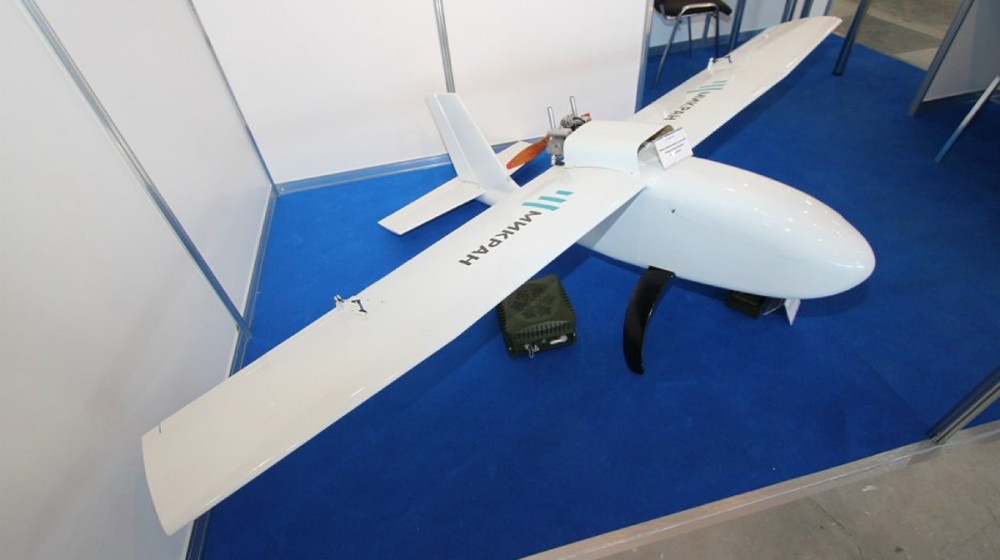Russia’s Carnivora, a new counterdrone robot, is built to hunt small airborne pray. Announced on Dec. 13, 2018, the robot is produced by Russia’s Mikran and has a stated mission to devour the competition.
“This drone has a very colourful name: ‘Carnivora.’ It was obviously selected due to its mission — attack and incapacitate other drones and UAVs, to ‘cannibalize’ them,” said Samuel Bendett, a research analyst at the Center for Naval Analyses. “According to the developers, the drone can use nets to intercept quadcopters; can carry several types of fragmentation and high-explosive ammunition, as well as reconnaissance equipment. Currently, according to Mikran, the prototype is undergoing factory flight tests.”
To carry those payloads, Carnivora has a body on the large size for medium drones. It weighs in at a maximum weight of around 88 pounds, with 35 liters of space for payload inside. The fixed-wing drone has a 16-foot-long wingspan, and a top speed of just over 90 miles mph. It is designed to stay airborne for between 10-15 hours. A prototype of the Carnivora was displayed last year at the inaugural “Robotization of the Armed Forces” conference and expo, hosted by the Ministry of Defense, alongside other uncrewed vehicles.
The Carnivora is also billed as made for the future threat environment, where electronic warfare renders remote control difficult and autonomy the order of the day. And Carnivora is hardly the only drone designed for combat in denied environments. Kalashnikov also recently announced an Arctic drone designed to operate without satellite navigation.
“More importantly, the UAV is able to work “in the conditions of radio-electronic suppression with the complete loss of satellite navigation signals.” This is key — Russians are actively training their forces and designing military tech to operate in an EMS-challenged environment, where the loss of GPS and GLONASS navigation would be imminent,” says Bendett. “This is one of the ways Russian forces are preparing to counter what they perceive is a technologically superior adversary that will take aim at the Russian navigation, satellite and other ISR technology.”
The electromagnetically denied environment is the future threat guiding the mission of the Carnivora. But its design is likely also shaped by the experience of Russian forces in Syria, where they encountered small commercial off-the-shelf drones used in simple and sophisticated attacks on Russian military bases and installations.
“C-UAS efforts are receiving lots of attention across the Russian armed forces — taking down small adversary drones is now getting built into the Russian military’s TTPs,” says Bendett. “This ‘Carnivora’ drone that can hunt and destroy other small drones fits into that larger CONOPS.”
Source: C4ISRnet

